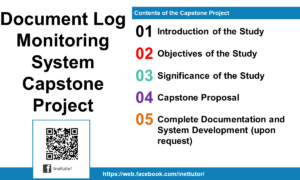Real-Time Object Detection App in Flask and YOLO
Table of Contents
- Real-Time Object Detection App in Flask and YOLO
- Introduction
- What is Object Detection?
- Understanding YOLO (You Only Look Once)
- Introduction to Flask
- Objectives of the Project
- System Architecture
- Technology Stack
- Features of the System
- Step-by-Step Development Workflow
- Example Code Snippet
- Use Cases and Applications
- Performance Optimization Tips
- Summary and Conclusion
Introduction
In the rapidly evolving world of Artificial Intelligence, real-time object detection has become one of the most impactful technologies across industries such as security, transportation, retail, and manufacturing. The ability to detect and classify multiple objects in live video feeds enables automation, monitoring, and smart decision-making in ways that were once impossible.
This article explores how to build a Real-Time Object Detection App using Flask and YOLO (You Only Look Once) — a combination that bridges the power of AI vision with the flexibility of web applications. You’ll learn how these two technologies work together, their architecture, and how to implement an intelligent system capable of detecting objects in real time through a simple web interface.
What is Object Detection?
Object detection is a computer vision task that identifies and localizes objects within an image or video. Unlike image classification, which only predicts a single label for the entire image, object detection predicts both the class and bounding box for each object detected.
Real-time object detection is critical in scenarios that require immediate response — such as security surveillance, autonomous vehicles, smart retail systems, and traffic management.
By combining deep learning models with optimized frameworks like YOLO, developers can now achieve frame-by-frame detection at lightning speed without sacrificing accuracy.
Understanding YOLO (You Only Look Once)
YOLO, short for You Only Look Once, is one of the most popular real-time object detection algorithms. Its name reflects its architecture: the model predicts bounding boxes and class probabilities in a single evaluation pass of the image.
Over time, YOLO has evolved through several versions — YOLOv3, YOLOv5, and the latest YOLOv8 — each improving accuracy, speed, and model efficiency. YOLO is lightweight and optimized for deployment, making it ideal for web-based applications that need fast inference times.
Why use YOLO?
- High detection speed suitable for live streaming
- Real-time multi-object detection capability
- Compatible with custom datasets and model retraining
- Active open-source community and constant updates
Compared with other frameworks like SSD (Single Shot Detector) or Faster R-CNN, YOLO remains the best choice for practical real-time use cases due to its balance of performance and efficiency.
Introduction to Flask
Flask is a micro web framework written in Python that makes building web applications fast and flexible. It is lightweight, simple to use, and integrates easily with machine learning and computer vision models.
In this project, Flask serves as the backend framework that handles video streaming, routes requests, and communicates with the YOLO model. The model processes each video frame, detects objects, and sends the processed output back to the user in real time.
Flask is ideal for AI model deployment because it allows you to expose your model as a web API or create a simple, interactive dashboard for visualization.
Objectives of the Project
The main objective of this project is to develop a web-based real-time object detection system that combines YOLO and Flask to provide users with a dynamic, interactive interface for detecting objects in videos or camera feeds.
Specific goals include:
- Creating a lightweight, responsive web interface for live detection.
- Integrating YOLO for real-time object recognition.
- Displaying detection results (bounding boxes and labels) in real time.
- Logging and analyzing detection data for insights.
- Enabling scalability for potential cloud deployment.
System Architecture
The Real-Time Object Detection App is composed of several integrated layers:
- Input Layer: Accepts live video feeds or uploaded video files from the user’s camera or device.
- Processing Layer: Uses YOLO for object detection and OpenCV for frame manipulation.
- Web Layer: Flask routes handle the live stream and update results dynamically.
- Visualization Layer: Displays processed video frames with bounding boxes and labels through a web dashboard.
- Optional Database Layer: Stores detection results, timestamps, and user interactions for analytics.
This architecture ensures seamless communication between AI inference, data handling, and real-time rendering.
Technology Stack
| Component | Technology |
|---|---|
| Frontend | HTML5, CSS3, JavaScript, Bootstrap 5 |
| Backend | Python (Flask Framework) |
| AI Model | YOLOv5 or YOLOv8 |
| Computer Vision | OpenCV |
| Database (Optional) | SQLite / MySQL |
| Deployment | Docker / AWS EC2 / Heroku |
| Version Control | GitHub |
Features of the System
Real-Time Camera Feed Detection
Capture live video using a webcam or an IP camera feed. YOLO detects objects and renders the output instantly on the dashboard.
Dynamic Bounding Boxes
Each detected object is highlighted with a bounding box, class label, and confidence percentage.
Custom Object Detection
Train YOLO with custom datasets (e.g., identifying fruits, vehicles, or tools) for domain-specific applications.
Detection Logs and Analytics
Store detection counts, timestamps, and performance metrics for further analysis or visualization.
Web-Based Dashboard
A responsive and interactive interface built with Flask and Bootstrap for accessibility across devices.
Model Switching (Optional)
Switch between YOLO versions or models depending on system requirements and performance needs.
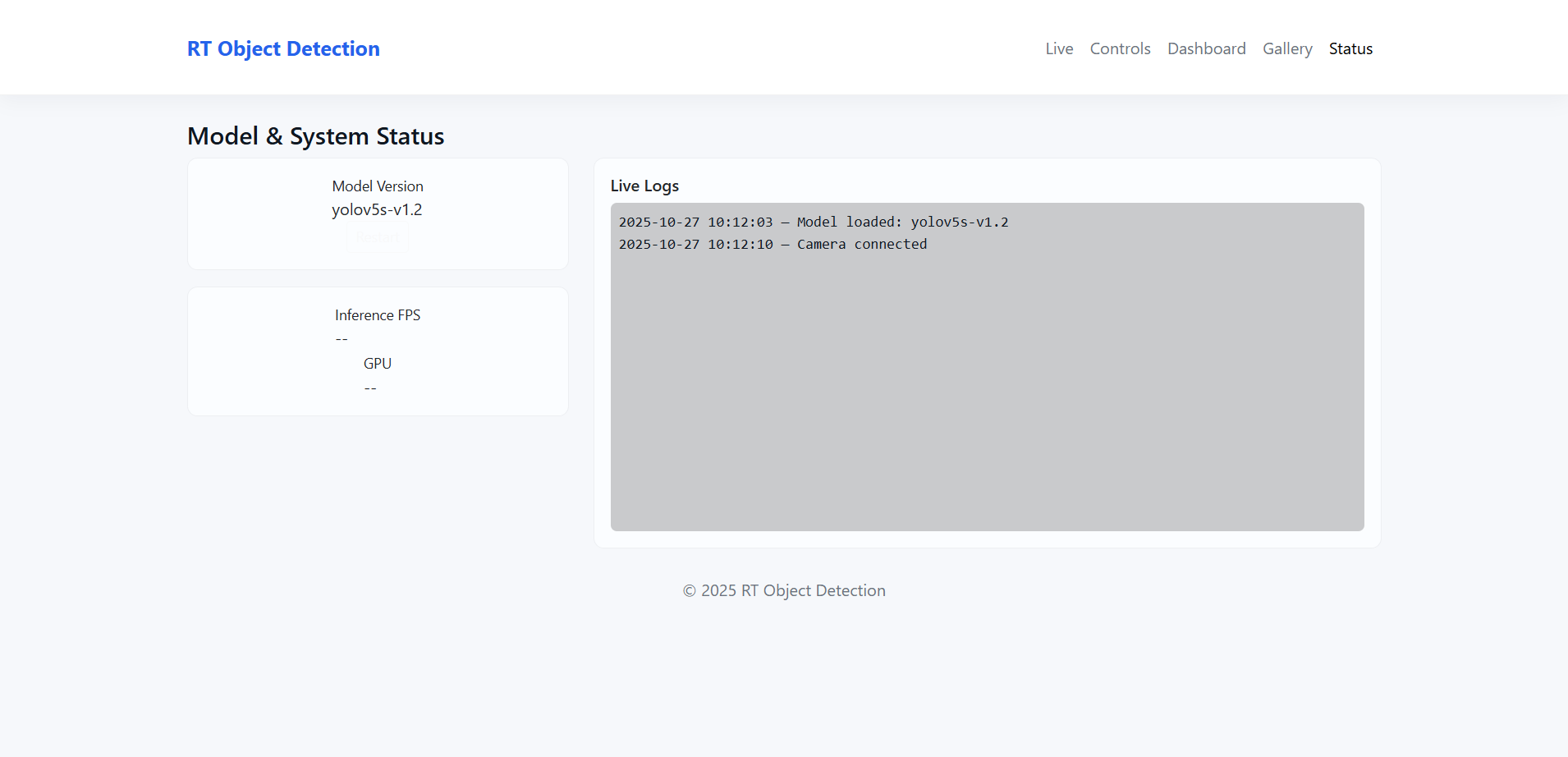
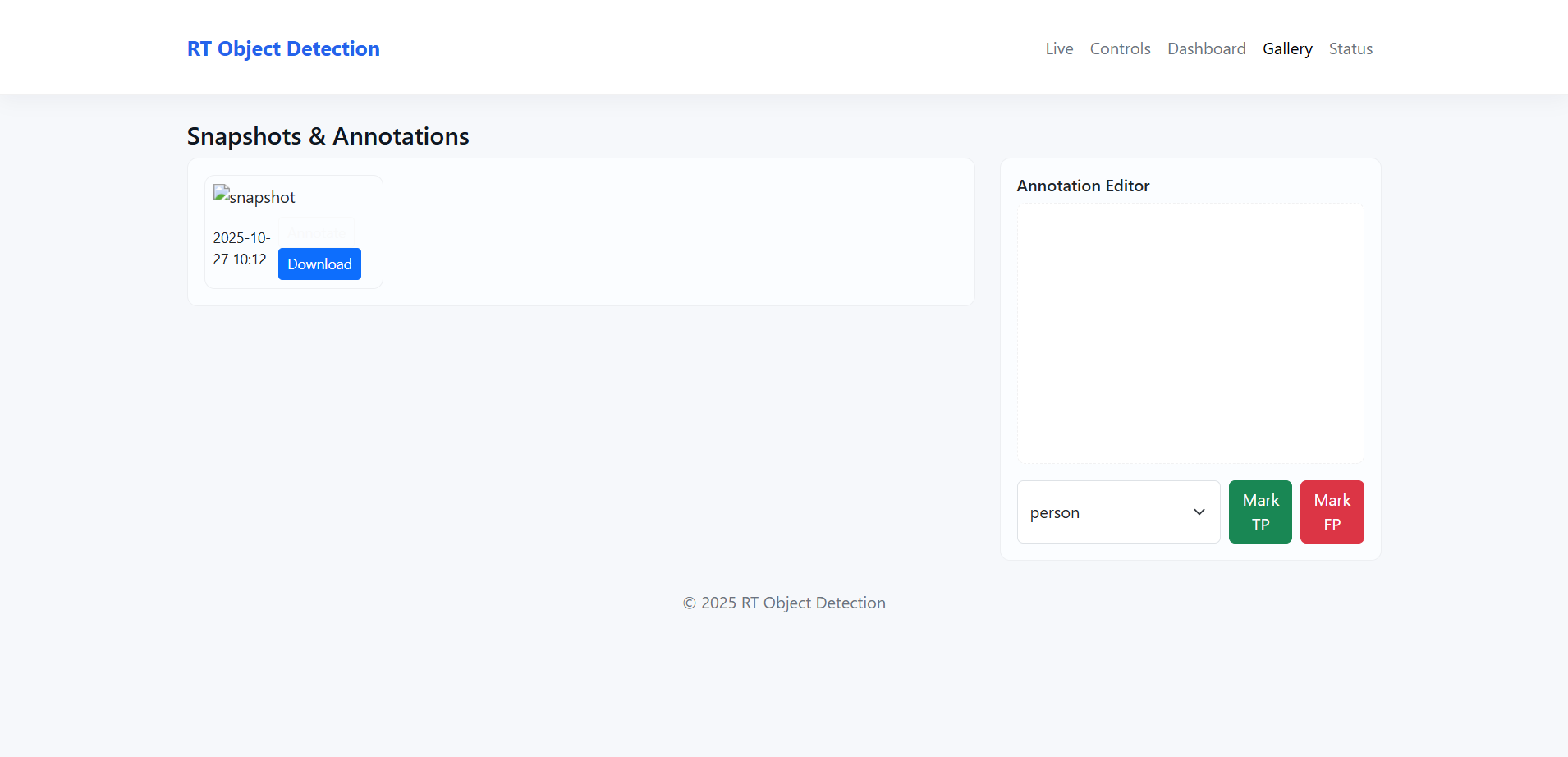
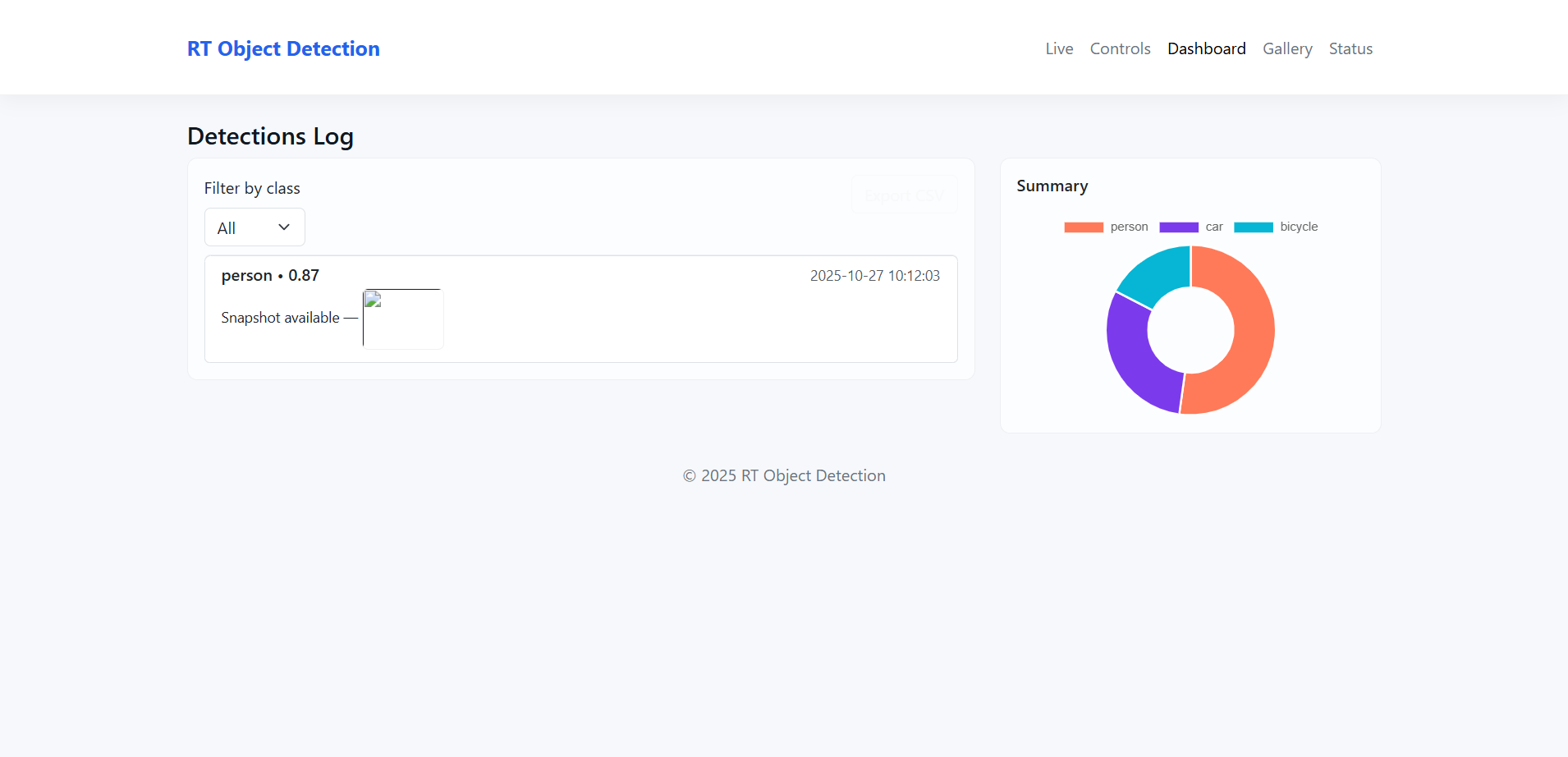
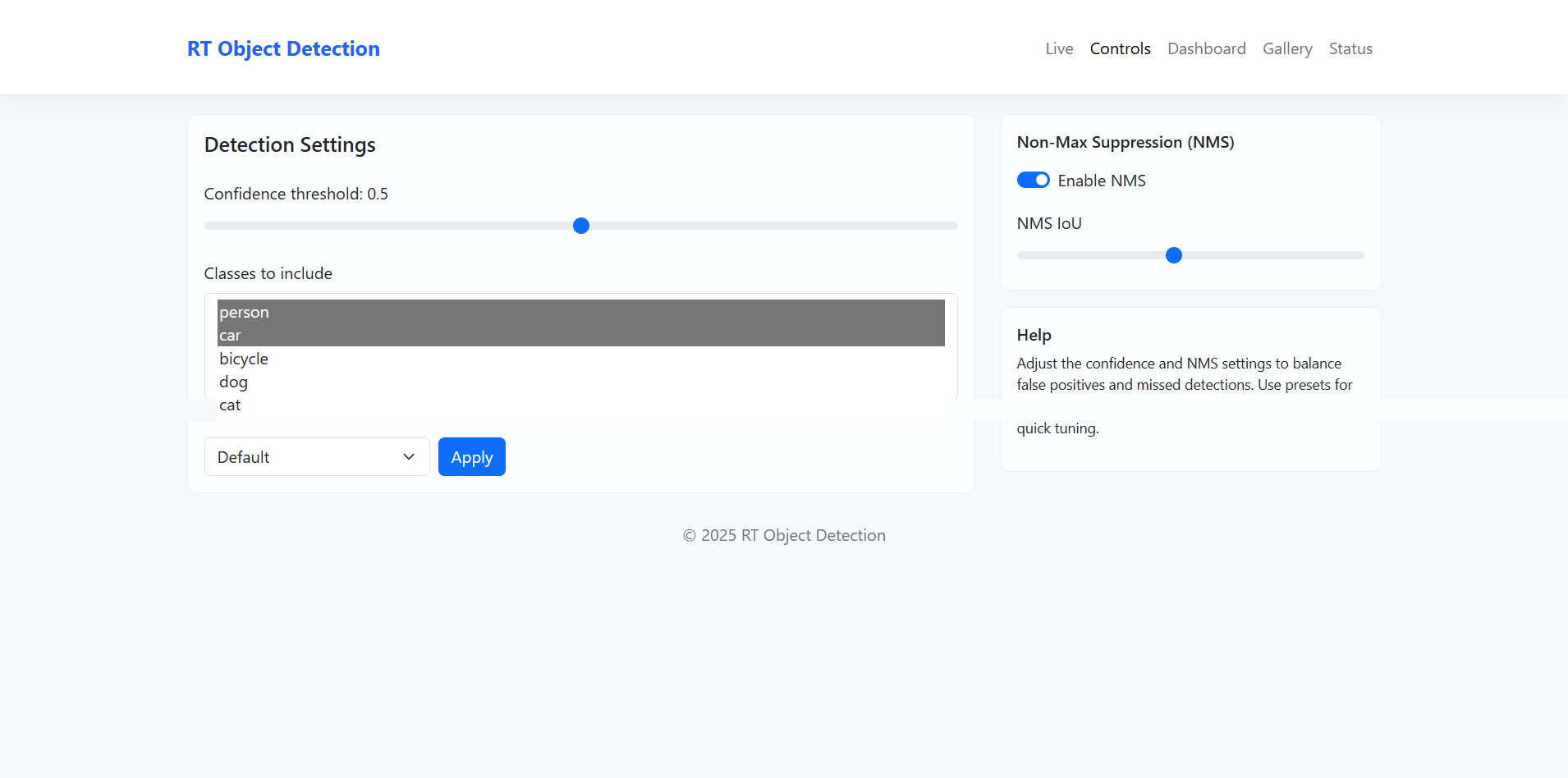
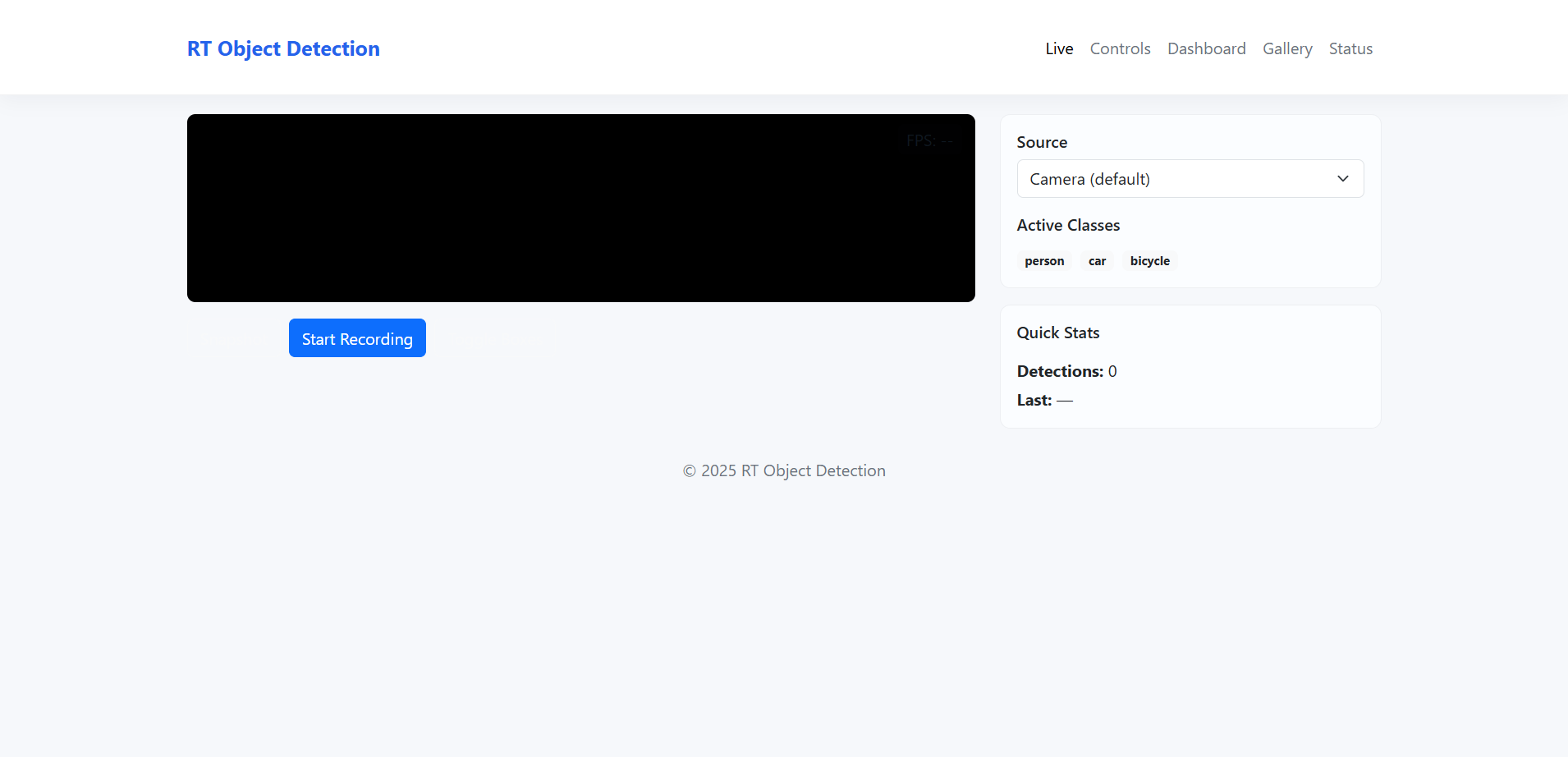
Step-by-Step Development Workflow
- Set up the Environment: Install Python, Flask, OpenCV, and PyTorch (for YOLO).
- Prepare the YOLO Model: Use a pre-trained YOLOv5 or YOLOv8 model, or train your own dataset.
- Integrate YOLO with Flask: Create Flask routes for uploading or capturing video streams and connecting them to the detection pipeline.
- Implement Real-Time Streaming: Use Flask’s
Responsegenerator to stream processed frames to the client browser. - Render Detection Results: Use OpenCV to draw bounding boxes and display class labels on frames.
- Add Optional Logging: Store results in a database for future analysis or training improvement.
- Deploy the Application: Containerize with Docker or host on AWS/Heroku for online access.
Example Code Snippet
A simple example of the Flask route handling video stream:
@app.route('/video_feed')
def video_feed():
return Response(gen_frames(), mimetype='multipart/x-mixed-replace; boundary=frame')
And the detection function using YOLO and OpenCV:
def gen_frames():
while True:
success, frame = camera.read()
if not success:
break
else:
results = model(frame)
annotated_frame = results.render()[0]
ret, buffer = cv2.imencode('.jpg', annotated_frame)
frame = buffer.tobytes()
yield (b'--frame\r\n'
b'Content-Type: image/jpeg\r\n\r\n' + frame + b'\r\n')
This demonstrates how each video frame is processed, annotated, and streamed to the browser in real time.
Use Cases and Applications
Security and Surveillance: Detect unauthorized access, intruders, or suspicious objects in live camera feeds.
Traffic Monitoring: Count vehicles, identify congestion, and detect violations in smart city systems.
Retail Analytics: Monitor customer movement, shelf inventory, and product engagement.
Wildlife and Environmental Monitoring: Track animals or marine species for research and conservation.
Manufacturing and Automation: Identify defective products and ensure quality assurance on production lines.
The versatility of YOLO and Flask makes this solution applicable across diverse fields.
Performance Optimization Tips
- Enable GPU Acceleration: Use CUDA for faster inference on NVIDIA GPUs.
- Optimize Frame Rate: Balance between accuracy and speed for smooth real-time performance.
- Use Model Quantization: Reduce model size without major accuracy loss.
- Implement Asynchronous Streaming: Avoid lag by processing and streaming frames concurrently.
- Batch Processing for Analytics: Process stored video data in batches for efficiency.
Summary and Conclusion
Building a Real-Time Object Detection App in Flask and YOLO is an excellent way to explore the intersection of web development, AI, and computer vision. With Flask managing the web interface and YOLO providing lightning-fast detection capabilities, you can create a fully functional and deployable system that can recognize multiple objects in real time.
This project showcases how open-source AI tools can bring innovation to industries ranging from security and agriculture to retail and automation. Whether for research, education, or enterprise, integrating YOLO and Flask provides a scalable foundation for developing intelligent, data-driven systems that can “see” and respond instantly to the world around them.
By mastering these technologies, developers and researchers can push the boundaries of what’s possible with AI-powered visual intelligence—making automation smarter, faster, and more accessible than ever before.
You may visit our Facebook page for more information, inquiries, and comments. Please subscribe also to our YouTube Channel to receive free capstone projects resources and computer programming tutorials.
Hire our team to do the project.
